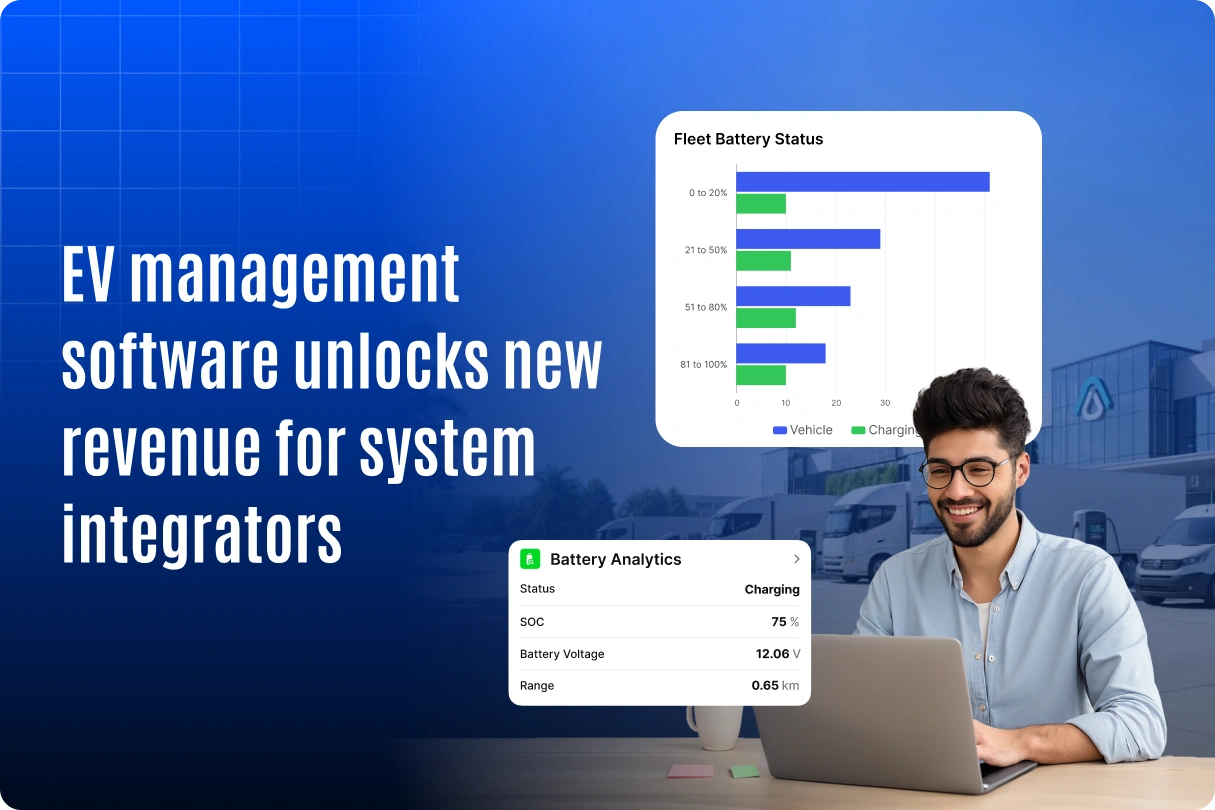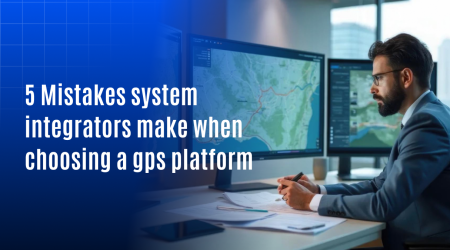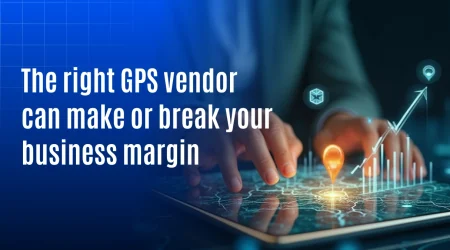Everyone’s Talking About EV Fleets — But Few Know How to Manage Them Right

Let’s face it — electric fleets are everywhere right now. Governments are announcing incentives. OEMs are launching EV models faster than ever. And system integrators are under pressure to bring all of it together — vehicles, chargers, batteries, and data — into one manageable system. But here’s the problem: going electric is one thing, managing electric fleets efficiently is another. That’s where most businesses start to struggle. And that’s exactly where EV fleet management software steps in — not as an add-on, but as the core engine of every successful EV operation.
What makes managing EV fleets so complicated
EV fleets bring new challenges that traditional systems just can’t handle. Think about it:
- Charging is unpredictable — one delay can throw off your entire schedule.
- Battery health changes with temperature, driving style, and load.
- Vehicles consume power differently depending on route and terrain.
- Data comes in from multiple devices — chargers, BMS, GPS, and telematics sensors.
Without a smart system to analyze this data, it’s chaos. And chaos is expensive. That’s why electric vehicle fleet software has become a must-have tool for OEMs and integrators — it doesn’t just monitor, it makes sense of the entire EV ecosystem.
How EV fleet management software makes everything work together
Imagine a single dashboard where you can:
- Track live battery levels and charging progress.
- Monitor energy consumption per vehicle and per trip.
- Receive predictive alerts before a battery issue disrupts operations.
- Plan routes based on charging station availability and range limits.
- Analyze EV performance data to reduce downtime and energy costs.
That’s what modern EV fleet monitoring software does — it brings everything under one roof. Instead of jumping between multiple platforms, system integrators can manage vehicles, chargers, and analytics in real time. And OEMs can get insights into how their EVs perform after they leave the factory floor — turning every trip into valuable feedback.
Why system integrators need this software more than ever
If you’re a system integrator, you already know how complex EV data can get. You’re dealing with new devices, APIs, and protocols — each speaking a different language.
A robust EV fleet management platform bridges that gap. It connects chargers, BMS, and telematics hardware seamlessly, giving you a clear, unified view of fleet performance.
That means you can:
- Deliver end-to-end EV management to your clients.
- Add EV charging analytics as a new service.
- Automate energy efficiency reports that prove real savings.
- Build recurring revenue through software subscriptions and support.
With the right platform, you’re not just integrating hardware — you’re building smarter businesses.
How OEMs benefit from going software-first
For OEMs, the game has changed. It’s no longer about selling vehicles — it’s about selling connected experiences.
By embedding EV fleet monitoring software into your solutions, you can:
- Offer real-time diagnostics to customers.
- Predict maintenance needs based on battery data.
- Improve design and performance through usage analytics.
- Provide post-sale software updates that strengthen loyalty.
Every EV sold with a connected platform brings you closer to your customers — and keeps them there.
EV fleet software turns data into decisions
What makes EV fleet management software powerful isn’t just data collection — it’s what it does with the data. It converts thousands of data points from every trip into actionable insights:
- Which vehicles waste the most energy.
- Which drivers use regenerative braking efficiently.
- How charging time affects delivery schedules.
- When to schedule charging to lower energy costs.
These small details add up to massive operational efficiency. Because in the EV world, the fleet that understands its data wins.
Why the future belongs to connected fleets
Transitioning to EVs is not the finish line — it’s the starting point. Managing them efficiently decides who stays competitive in the long run. For system integrators, it’s an opportunity to lead with innovation. For OEMs, it’s a chance to create vehicles that do more than move — they communicate, optimize, and evolve. And the tool that makes it possible? EV fleet management software. It’s the bridge between technology and performance, between energy and intelligence.
Final thoughts
Everyone’s talking about electric fleets. But managing them right — that’s where the real challenge, and the real opportunity, lies. The ones who succeed won’t just be those who go electric. They’ll be the ones who go intelligent — by using the right software to power their fleets, their data, and their growth.



